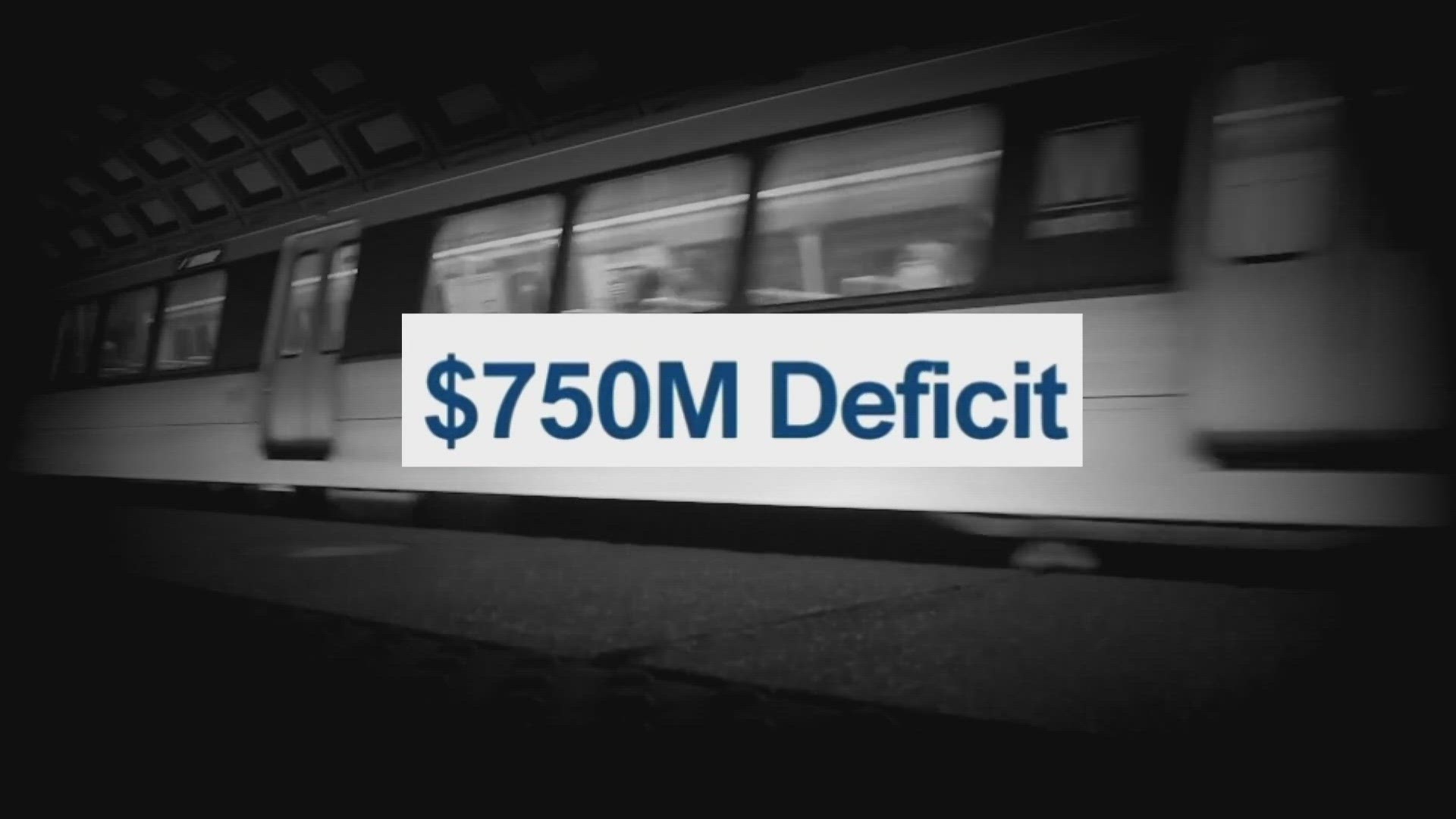WASHINGTON — In the coming months, Metro faces key decisions that could mean the difference between layoffs and closing a $750 million budget gap.
In June, one agency official described the possible future of Metro as a "death spiral for transit," in light of the looming $750 million budget shortfall - nearly 30% of its overall budget starting summer 2024.
Metro says the problem is fewer people are riding Metro while at the same time, it's getting more expensive to operate. Drastic cuts may need to be made to offset the shortfall in the 2025 fiscal year that starts in July of 2024.
According to documents from the Metro Finance and Capital Committee, Metro sustained operations starting in 2020 through federal relief, which offset the revenue lost due to the COVID-19 pandemic. Officials are forecasting that the funding through the American Rescue Plan Act of 2021 may be exhausted in Fiscal Year 2024 (FY2024), leaving a budget gap of $750 million beginning in FY2025.
“We are trying to be transparent, early, not trying to bring anxiety, fear and shock,” Metro GM Randy Clarke said.
In order to close the deficit, Metro estimates it would need to cut service by 67%, which would halt the ridership recovery, reduce or eliminate most service, and necessitate steep reductions in maintenance, police, and customer service functions
"Customers would experience severe crowding, longer police response times, and more frequent elevator and escalator outages," the document reads. "These service cuts are below current capacity needs and would likely trigger a death spiral of a loss of ridership, detrimentally impacting the region through worse traffic, reduced access to jobs and opportunity, and more pollution."
Metro is actively seeking ways to save money. An internal task force has identified $50 million in recurring savings to reduce the deficit through administrative efficiencies, reduction in consulting services and overtime, and more.
At a Board of Directors meeting Thursday, the Finance and Capital Committee discussed some of their options, including:
- Closely managing expenses
- Reducing operating costs
- Preventative maintenance and potential federal revenue recovery
Other than fares, Metro can't raise any money on its own. It doesn't have a dedicated tax to help pay for the system, and Metro says it can't raise fares enough to fill this gap.
“Fare will not solve the problem," Clarke said at the board meeting. "Can we collect every fare? Yes. Are we trying? Yes. Can I collect every fare? Absolutely not."
Metro says it has developed three potential FY2025 budget scenarios that could help reduce the deficit from $750M to potentially between $365 million and $650 million depending on Board decisions.
"All three scenarios would allow Metro and the region to avoid the devastating service cuts described in June, but they would require significant increases in investment and legislative action including adjusting the three percent subsidy growth cap in Maryland and Virginia with a one-time adjustment of the FY2025 baseline subsidy."
One problem though is that Metro's budget calendar, service plan and collective bargaining agreement requirements do not readily align with jurisdictional legislative calendars. However, delays in addressing the FY2025 budget constraints could lead to layoffs and impacts on services such as performance, reliability and customer experience.
Metro will present its budget plan in December. Employees could learn as early as January 2024 if they will be laid off, as a six-month advance notice is required. Additionally, January is when a potential hiring freeze could be implemented.
RELATED:
WATCH NEXT: Metro faces 750M deficit

